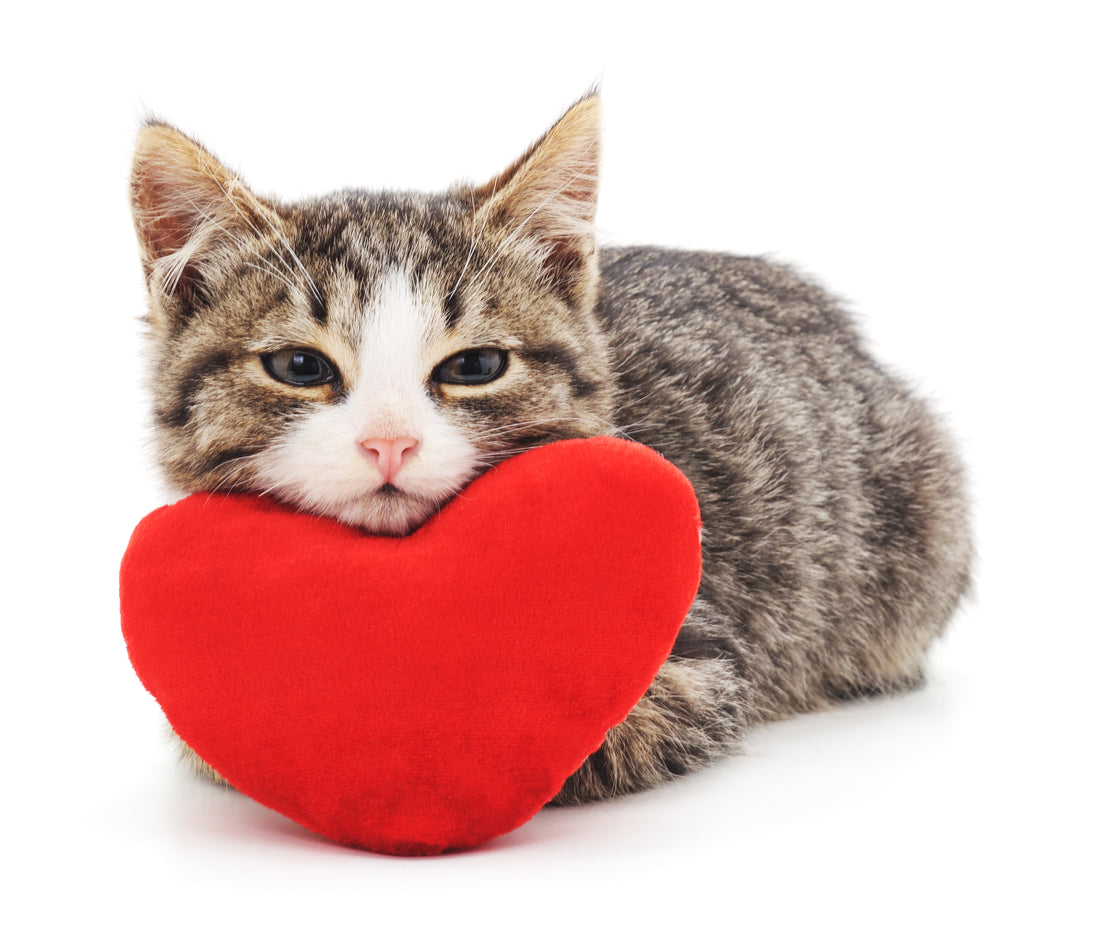Most of us notice cat relationships are similar to humans in that we all have preferences and we all have social norms. But cats have a special way of bonding with us as well as others. Find out what bonding behaviors our cats may be communicating and learn surefire ways to bond with any cat.

Common Behaviors of Bonded Cats
All cats display affection a little differently. Keep in mind every cat has their own personality and set of preferences. Following is a list of some of the most common displays that may indicate bonding. A bonded cat may show all of these signs, or only a few.
- Cats who are bonded will often groom and lick each other. As a point of interest, the cat who is higher up in the social hierarchy may be more likely to take the primary role of grooming as it is often seen as their responsibility to after the others. However, all cats may groom each other depending upon how their relationships have developed.
- Bonded cats rub their faces and bodies on each other. Cats have glands that contain pheromones. By rubbing their faces together, they commingle these pheromones, creating contentment and signaling a bond. They may also intertwine their tails, expose their bellies, and nip or chew on each other or on our fingers.
- Cats who are bonded feel safe and comfortable with each other and may rest or sleep cuddled up together. If only two cats in a larger cat family tend to snuggle and sleep together, they may have bonded with each other. This is often why we see rescues trying to adopt cats out together. They understand that separating a bonded pair, trio, or other family dynamic will only add to their trauma.
- Bonded cats do enjoy each other’s company. If one doesn’t want to snuggle, share space, or play, they may simply move, rather than hiss, which is a behavior of cats who are not bonded.
As a guardian to one or more of these feline cuties, it is important we understand their social structure. It will go a long way in helping us understand and relate with them better.
EcoTreats can be an excellent way to bond with a cat. They are all-natural, low-calorie, premium treats cats love. For those who want a stronger, more trusting bond with their cat, keeping a few treats nearby for their feline friend can help them associate positive experiences with their guardian. Try them now.

How to Bond With a Cat
Bonding is voluntary and is based on a relationship of trust. That means the number one way to get our cats to bond with us is to create a safe, respectful space. Most humans misinterpret this as a place where we play a lot, pick them up to snuggle with them, and feed them. However, cats have higher intellectual needs and personal preferences. For example, many cats prefer not to be picked up. When we invade their space and insist on petting them or cuddling when they don’t want it or didn’t approach us, we actually break down trust, which is harmful to the bonding process. Here are just a few ways we can all bond with our cats:
- Give them their space. Cats love to hide and explore. They also like to be close without being in our laps 24/7. By giving cats respectful space, playing it cool, and allowing them to come to us, we establish ourselves as a safe zone. We should also remember not to chase them down after they leave us for a different spot in the house. We may miss that warm spot they just created in our lap, but they’ll come back sooner if we leave it to them to decide.
- Keep them on a familiar diet with familiar treats, and surrounded by familiar toys. It’s always fun to introduce new things, but cats, like many of us, are creatures of habit. Whenever possible, mix new and old elements instead of eliminating the old and bringing in the new.
- When they do start coming around to snuggle, they’ll need time to warm up. Some become more friendly faster than others, but we don’t need to force anything. They may knead or head-bunt or play with our fingers. This is a time to be still and let them come to us.
- Knowing how to read our cats is vital. For example, purring is a common sign of affection, but it can also indicate a cat is agitated. People don’t always realize this and will often force their affections on a purring cat, thinking that they like it. Cats will also switch their tails quickly when agitated, not just when they are feeling playful.
- Reinforcing positive experiences around us will encourage trust and bonding. For example, always having a treat or two means once a cat has been snuggling with us for a few minutes, we’ll have a fun reward. We shouldn’t use it to attract them to come over, however. That’s just enticing them, rather than rewarding them.
- Be patient and optimistic. Binding is a process. It doesn’t happen overnight. By being consistent, respectful, and by reading their communication cues, we are creating the best possible environment for bonding.
Bonding with our cats can be rewarding and therapeutic. Creating a household that encourages bonding across all inhabitants, not only means we have a loving home, it also means we have cultivated a safe zone for ourselves and our loved ones.
Further Reading:
- “Introducing Your New Cat To Other Pets,” The Humane Society of The United States
- “Signs a Cat Has Bonded With You,” Cuteness
-
“What We Understand About Cats and What They Understand About Us,” Scientific American


